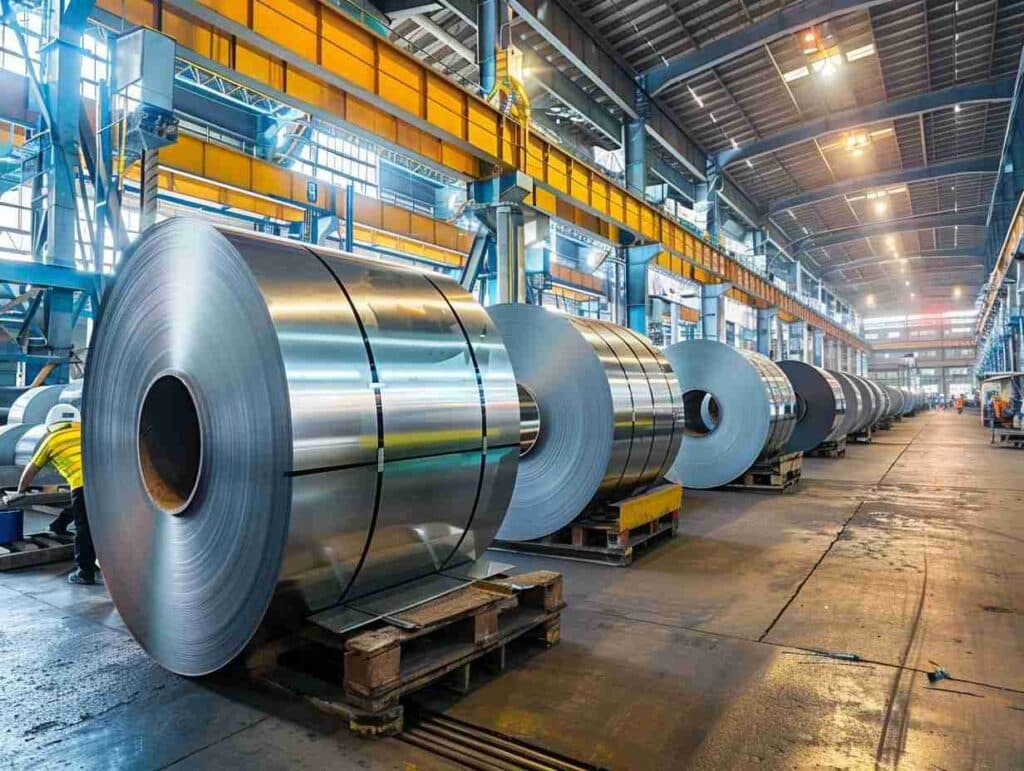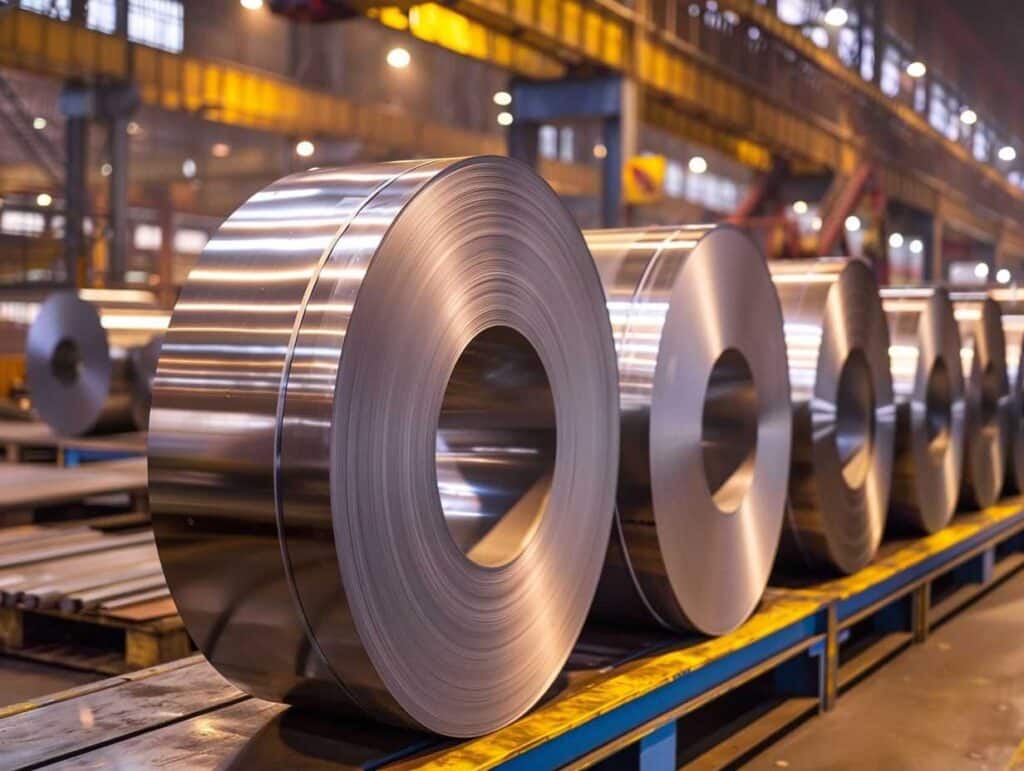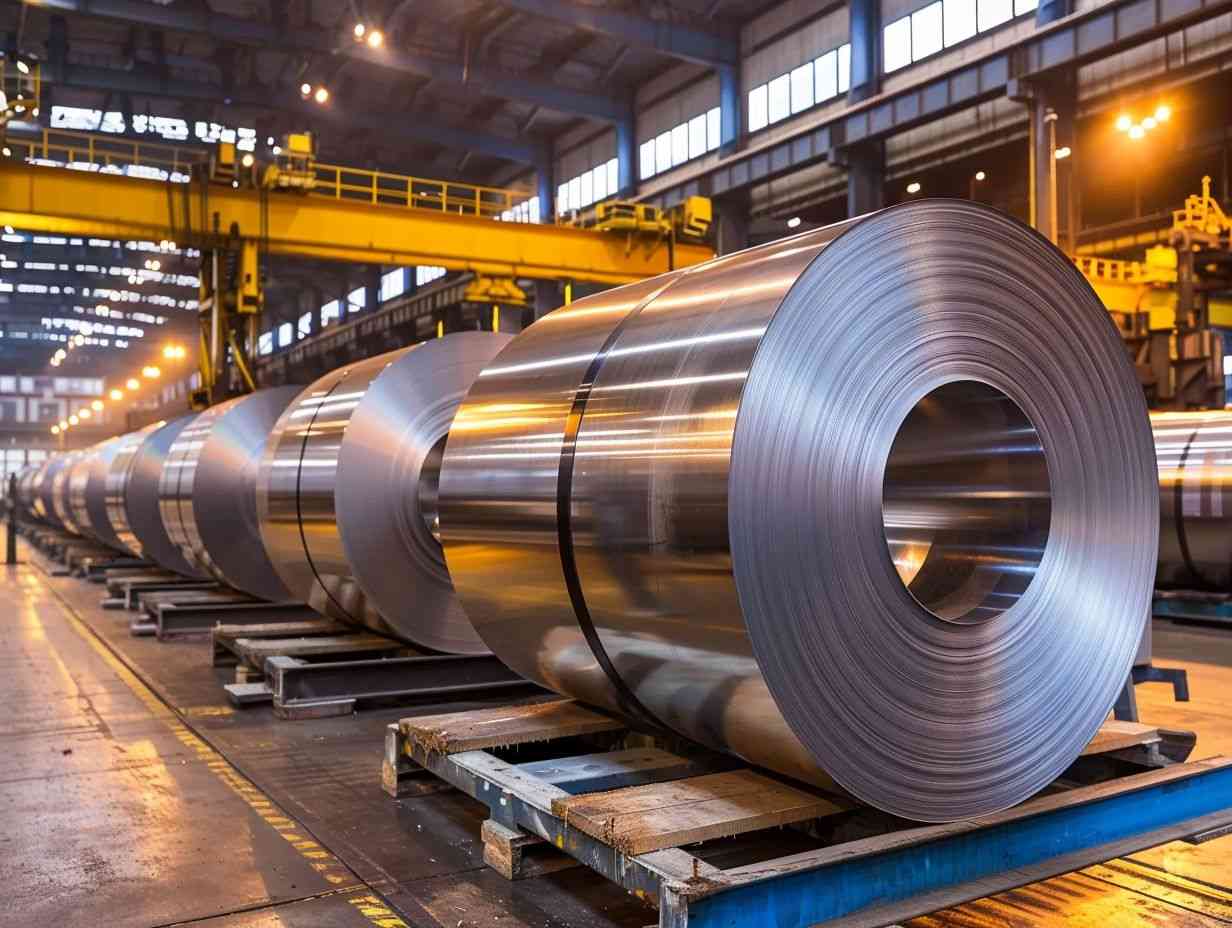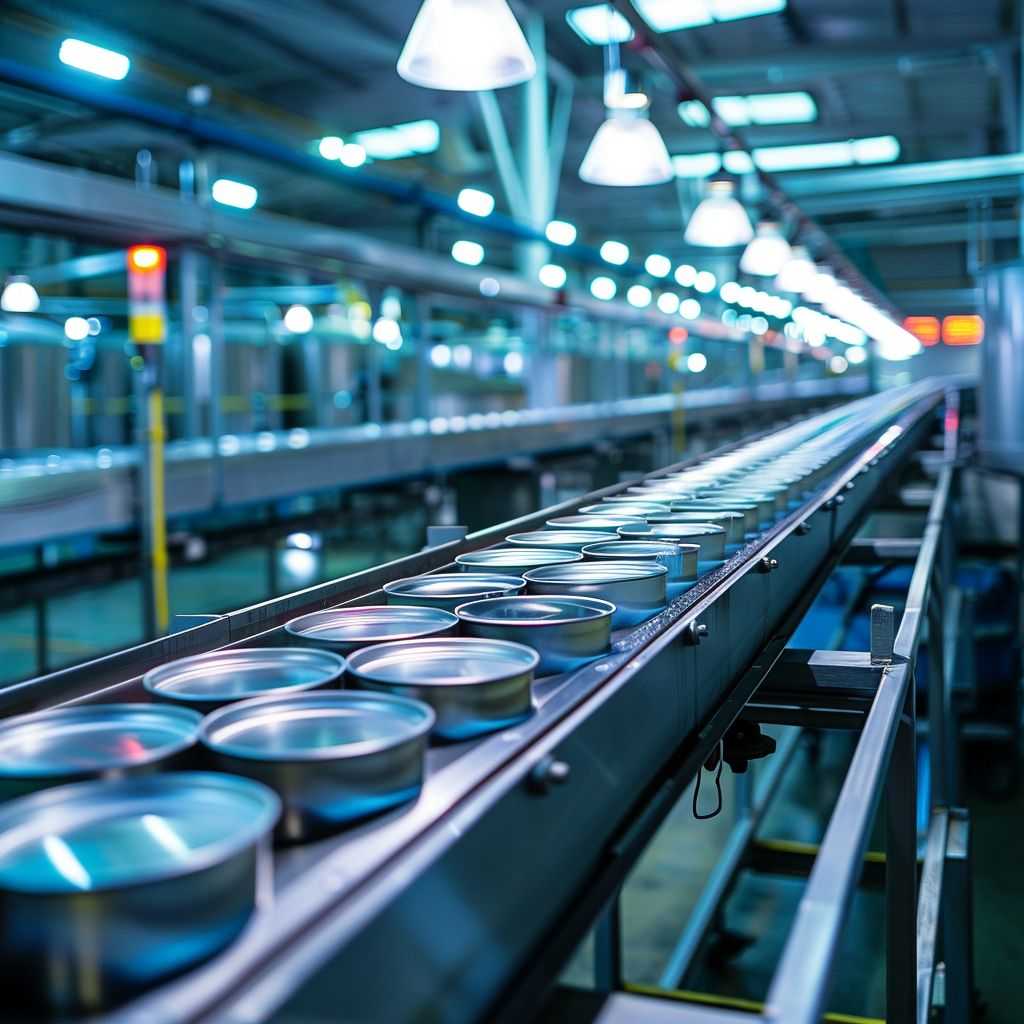Modern tin plate is typically produced using huge coils fed into an automated processing line that electrolytically coats it with tin. Once coated, it must be passivated (developed chemically using a chromate bath) and inspected.
Differentially coated tinplate is also available, usually featuring one surface with heavier corrosion protection than another. This material can be found in containers that require higher corrosion protection for their interior corrosion resistance.

Food and Beverage Containers
Tin plate offers the strength and formability of steel combined with noncorrosive, nontoxic properties of tin. This metal alloy combines strength with formability, and it can be found in food containers, paint cans, oil cans, tobacco products and many other household and commercial goods. Tin is often fabricated into gaskets seals and automotive air and oil filters. Furthermore, noncontainer applications of corrosion resistance for Tin plates such as grates baking pans badges and other hardware.
To produce tin plate, steel (formerly iron) must pass through a rolling mill, be pickled in acid, and coated with a thin layer of tin to protect it from rusting. Electrolytic deposition from an aqueous solution of tin salt allows precise control over thickness; or the tin may be applied solely on one side – known as differential tinplate.”

Tin is then rolled and annealed to harden it, before it is cleaned, rinsed to remove any residual tin, and polished to achieve a smooth surface finish. Once completed, the finished tin plate can then be ready for use; however, additional treatments such as chromate passivation film protection to guard against excessive oxidation during storage and transportation and final oil coating can aid fabricability of can production while helping bond with food or beverages that will go inside it are usually also performed before leaving the factory.
Before recoiling at the end of a process line, tin plate is carefully examined for defects by optical or automated scanning equipment and then given a very thin coating of oil to protect it from being scratched during shipment and handling. Sometimes this oil coating may be changed out for one containing either varnishes or polymers to enhance performance when being used to manufacture cans or for other uses.

Based on its intended application, tin plate is usually plating either by barrel or rack method. With barrel plating, parts are placed inside of a rotating drum that holds the plating solution while parts for rack plating can be suspended from racks that immerse in this solution – typically used when larger or more delicate parts cannot fit inside of barrels; rack plating allows better control over deposit thickness control.
Noncontainer Applications
Tin plate has numerous non-container uses, including sheet metal fabrication, electronics manufacturing and mechanical part creation. Its versatile coating offers good corrosion resistance as well as bondability to other materials like glass and plastics – not forgetting its solderability and weldability capabilities.
Cold-rolled steel coils are fed into a processing line that electrolytically coats them with tin, through various processes: tinning which covers the steel base plate with a thin layer of tin; flow melting comprising thermal treatment above tin’s melting point followed by rapid quenching in water and formation of tin iron alloy; passivation using sodium dichromate electrolyte solution, blocking oxygen diffusion into tin; plating using pure tin anodes in combination with an aqueous solution containing salts to deposit continuous films of tin on its surface; and finally oil coating and etching finishes the process – helping prevent whiskers formation.

Once tin plating has been applied, a strip is fed through a series of tanks designed to clean, pickle, and rinse it before moving along its entire length at speeds up to 600 meters/minute. Each of the tanks contains electrically driven electrolytic cells which deposit pure tin onto steel; these cells may be engineered so as to provide different coating weights on either side of the strip and create differential tinplate production.
Food and beverage containers fabricated from tinplate are often coated with lacquers to make it impervious to environmental corrosion and contact with its contents. Lacquers are solutions of resin or resin-drying oil complex in volatile solvents applied directly onto the interior surface and dried before UV radiation occurs, protecting tinplate from sunlight, moisture, odours and more. Tinplate may also be coated with an oily lubricant coating designed to ease its passage through container forming machines.

Electronics
Tin plate can be found everywhere from food cans to aerosol cans and specialty chemicals to dry products like paints. Tin plate is frequently plated onto large electrical components for a durable shield against oxidation and corrosion; its soft metal nature offers good crimping, soldering and welding properties; it is even nontoxic and does not subject itself to whiskering in harsh environmental conditions, making tin plate an attractive plating choice when plating sensitive copper components like batteries.
Modern tin plate is made by electrolytically coating cold-rolled steel coils with multiple layers of electrolysed tin plating in huge coils fed through an assembly line that electrolytically coats its surface with electrolytically coated tin granules. Once applied, these layers of electrolytically coated tin typically require multiple passes through an automated processing line before passivating to maintain stability of finish and ensure precise thickness control – this allows different industries and applications with differing requirements to have exact specifications met by precision plating processes that adhere to those specifications.

The end product of electroplating is a highly corrosion-resistant, smooth, bright matte-tin surface free from brighteners that interfere with solderability and can easily be reworked to accommodate various fluxes and melt temperatures. Zinc undercoating often provides further protection from hydrogen embrittlement caused by exposure to water, while also offering corrosion resistance.
Once plated, cans are produced by rolling and forming their bases and tops into their final shapes, before sealing with lacquer from their manufacturer and being seamed together at the bottom. Tinplate serves an essential function in this industry as it shields contents from contaminants; its main use here being protecting contents against contamination.
Tin plate is widely used in the electronic industry for crafting circuit boards, wires and connectors – particularly power cable plugs and sockets – while also being utilized in start-stop hybrid cars, microhybrid cars and alternative energy vehicles. As countries worldwide move toward stricter environmental regulation and demand safer materials to replace hazardous ones. Its applications will only continue to increase.

Toys
Tin plate offers the strength and formability of steel with the noncorrosive, nontoxic properties of tin. As a result, this versatile material makes an excellent container material. Tinplate can be found in containers used for food and beverage packaging, oil/liquid containers, paint/powder applications as well as aerosol containers/caps/closures as well as radio/electronic equipment applications; other uses for it include toys/baking equipment electrical insulation components industrial components; LTS is often preferred over standard thickness as this offers cost savings over standard tinplate.
Steel strip used as the foundation of tinplate must meet stringent specifications to optimize fabricability and corrosion resistance. Impurities should be minimized, temper graded steel sheet must have appropriate temper grades, tin must have sufficient coating weight according to individual uses, recoiled coils must pass inspection prior to recoiling or shipping and it may undergo light chromate passivation or heat treatment at the end of its production line to protect from hydrogen embrittlement, which weakens its coating over time when exposed to environmental elements.

Before applying tin to steel, it must first be pretreated in an acid bath to remove oxides and dirt. After being cold rolled, electrolytically deposited onto both sides of the plate using either hot-dipping or cold-dip galvanizing processes; with former being more costly while latter being faster and cheaper.
Once ready for sale, tinplate must be inspected and marked according to specifications that include its steel substrate type, extent of tempering, coating weight, annealing method and surface finish. After inspection and marking it as ready for sale, it will then be re-coiled for shipment directly to customers.
Tinplate is used by both large can manufacturers to manufacture beverage cans and food containers, and by smaller companies who produce toys made out of it. When used to construct cans, tinplate provides an attractive metallic sheen which makes printing and painting possible as well as soldering, welding, cementing and assembly operations. Meanwhile for other uses tinplate is strong yet lightweight making joining with rivets or screws simple; plus it is highly recyclable!



